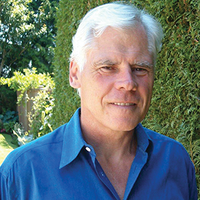
Director of Energy Initiatives
Don’t worry. TIAC Times hasn’t morphed into a publication on conspiracy theories. This article is about removable fitting covers, also known as insulation blankets, insulation jackets, pre-insulated covers, and perhaps a few more descriptives. Suppliers exist all over. One only has to go to National Insulation Association’s (NIA) Insulation Outlook to see ads for competing products. Some TIAC members manufacture their own and others buy off the shelf. There are even rolls of pre-insulated material that can be cut on-site and installed on fittings.
Much has been written about removable fitting covers ranging from the technical to ‘features and benefits’. There remains no reason to not incorporate removable fitting covers for below and above ambient installations. We, as an industry, are quite familiar with the benefits of being able to insulate areas that can’t or shouldn’t be insulated using traditional methods. What we take for granted as a solution that provides energy efficiency, personnel protection, condensation control (a special product grouping), and quick payback, others outside our industry see as a revelation.
It’s interesting to see the reaction from some of the delegates at trade shows we participate in. I always have samples available, and someone is always picking one up to marvel (no exaggeration) at the idea—the simplicity and ease of handling. At this point, there is no real “selling” required. They get it.
Are we alone in the universe talking about removable covers? Not by a long stretch. There are other suppliers out there doing their own quiet thing that ends up moving large quantities of these covers. Before I describe to you what these suppliers are up to, I want to digress for a moment and touch on the TIAC membership.
I was told that last year a TIAC member sold over 1,000 removable covers to a major industrial project. Imagine that: over 1,000 covers. Most of these covers were quite large. I couldn’t even guess at the number of person-hours it took to produce this quantity or the quantity of insulation and other materials purchased. I’ll be discreet and not mention this supplier’s name since they haven’t publicly come forward with details. Regardless, isn’t there a story here? I’ll come back to this question later on.
Who else is flying under the radar? Let’s take a brief look at Firwin Corp. Firwin is a fully integrated manufacturer of removable covers. They produce excellent quality custom-made covers. They are capable of providing turnkey services ranging from on-site energy audits through to manufacturing and installation. They also provide training for maintenance personnel on how to remove and reinstall the covers. The market areas Firwin is involved in extend to mining, petro-chem, commercial, and institutional applications.
These companies are definitely not household words: Spirax Sarco Ltd. and Preston Phipps Inc. They compete head-to-head in hundreds of product categories and services. They both provide energy efficiency and performance audits on more strainers and steam traps than I ever knew existed. They are both suppliers and installers of removable fitting covers.
Both companies have extensive design capabilities where they install and service strainers and steam traps as well as other steam delivery related systems. Their people are in facilities all the time doing this type of work. Their on-site personnel are trained to look for deficiencies and opportunities.
None of the companies I mentioned supply or install mechanical insulation. Do they see things when they’re conducting an audit or servicing a steam trap? I have to assume they do. However, the focus is on their specialties and not ours.
What if we were to approach these suppliers with the idea of helping them provide “add-on” services to their respective clients? Could that work? Could these companies then be in a position to enhance what they offer their clients? Since these suppliers operate nationally, could we develop a program to address that geographical spread? Perhaps we could start small with a few interested TIAC members and deal at the branch level. All interesting thoughts and questions, with the end result being increased business for TIAC members. As I see it, this increased business would most likely be in areas our members wouldn’t have otherwise known about.
Getting back to the “story” comment earlier, a TIAC member supplied removable covers to the Royal University Hospital in Saskatoon. To quote a part of an article published in the May 11, 2017 issue of Facility, Cleaning, and Maintenance, “Insulated covers were also installed on 325 portions of the steam distribution system to reduce wasted heat…” I read the article (and you should, too) and began to make some inquiries. I wanted to know who supplied and installed the insulated covers. I eventually found out it was a TIAC member. I thought this is a win TIAC should be shouting about.
There were a little over 200 insulated covers installed at St. Boniface Hospital in Winnipeg. I was told hundreds of insulated covers were installed in Ottawa at Carlton University, Montfort Hospital, and Ottawa General Hospital. Where else are large quantities of removable covers being installed? At least one of these suppliers shows up in the same trade shows we do. The same delegates we see visit them. Their follow-up strategies result in quantifiable business.
Wouldn’t this make an amazing story? Just asking. •



